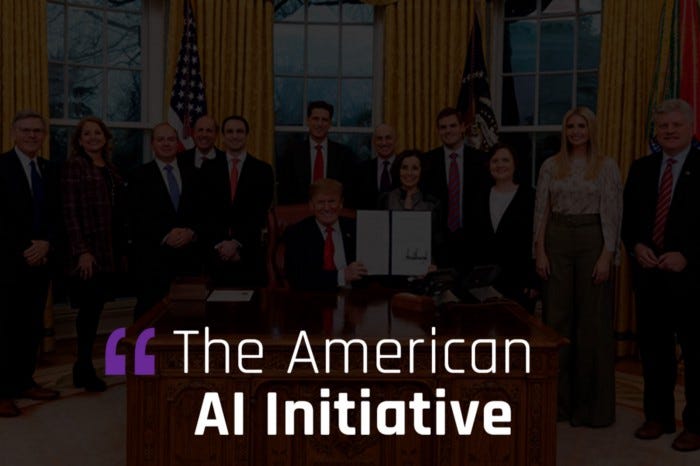The American AI Initiative - A Spotlight on Artificial Intelligence

Remember when you had to tune in to the tv or radio and wait until the weather report came on? It’s hard to imagine such an inconvenience! Today, advancements in Artificial Intelligence (AI) technology are being used everywhere, even around the home. One example is Alexa; ask and “she” will play your favorite music, find a cell phone, or change the thermostat setting. Will we continue to accept AI in our day-to-day lives when it reaches outside our comfort zone and into sensitive areas such as security and national defense? And how will AI be managed as its uses expand?
On Monday, January 11, 2019, President Trump signed an “American AI Initiative” executive order to address these concerns. It is designed to provide a federal agency focus on AI research and development intended to keep the US on a direct path to continued technology leadership.
The Office of Science and Technology Policy at the White House published an article explaining the five key areas outlined in the executive order to help AI leadership grow in the United States. They are:
1. Investing in AI Research and Development (R&D) in corporations, academia, and government on products and ideas that will benefit Americans.
2. Unleashing AI Resources to make AI data and models more available to American R&D Experts. The increased value AI provides bears a higher responsibility to maintain safety, security, civil liberties, privacy, and confidentiality protections.
3. Setting AI Governance Standards and guidelines that will foster trust for AI development used across sensitive industries, including healthcare, banking, and public transportation.
4. Building the AI workforce. The National Council for the American Worker will provide programs and fellowships for American workers to help them achieve science, technology, engineering, and math (STEM) skills needed for AI applications.
5. International Engagement and Protecting our AI Advantage against strategic competitors and foreign adversaries.
The US has always outpaced other countries in significant technology advancements. Today, American companies such as Google and Amazon lead the world in AI. They do this by attracting the best AI talent. However, In Summer 2017, China developed a plan to become the world leader in AI with an industry worth $150 billion by 2030. Until now, the US did not respond to this competitive manifesto.
While many technology experts are pleased that AI initiatives have been addressed, there is trepidation that they allocated no funds to achieve these goals. The US must implement the guidelines and programs outlined in the executive order to address civil liberty concerns. Time will tell if AI research efforts will maintain US leadership in this transformative technology.